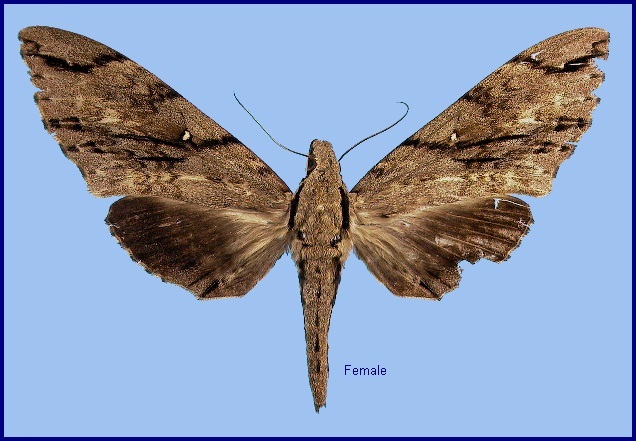
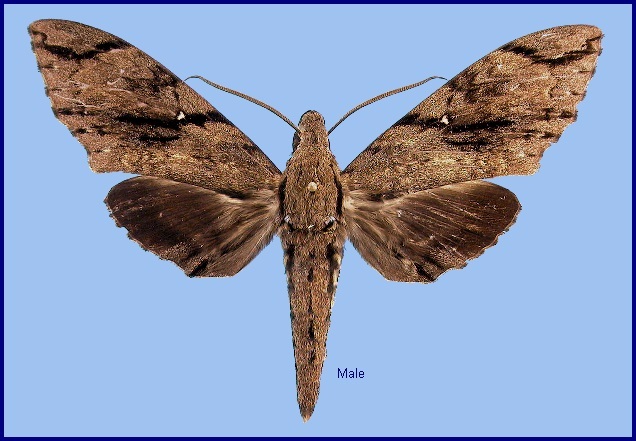
Diludia rubescens Butler, [1876], Proc. zool. Soc. Lond. 1875: 623. Type locality: North India.
Synonym. Diludia rubescens Butler, [1876].
Synonym. Meganoton rubescens rubescens Rothschild & Jordan, 1903.
Synonym. Meganoton rubescens dracomontis Mell, 1922.
Similar in appearance to the American Amphonyx lucifer (Rothschild & Jordan, 1903), and to the oriental Psilogramma menephron (Cramer, 1780). Smaller than Cerberonoton rubescens severina (Miskin, 1891). Outer margin of hindwing almost even, not scalloped as in Cerberonoton rubescens severina. Mesothoracic tegula with sides of the same clayish brown as the forewing upperside, unlike Cerberonoton rubescens severina. Palpus as large as in Meganoton nyctiphanes, second segment shorter than broad, including scaling. Abdomen with three or four distinct yellow side patches, bordered above by a continuous black band. Both wings with fringe less extensively white than in Cerberonoton rubescens severina. Both wings undersides darker than in Cerberonoton rubescens severina.
In the male genitalia, uncus thin, gently curved, strongly spatulate, the sides of the dilated apical portion turned down and clothed with some long, stiff hairs, the apical margin rounded-truncate. Gnathos longer than uncus, turned sharply dorsad near apex, and produced at the curvature into an obtuse process that is compressed like the vertical, cleft, apical part of thee gnathos. Valve with ventral margin oblique, dorsal margin straight proximally then somewhat dilated and turned inward; apex obliquely rounded; a patch of large, multidentate, clay-coloured stridulatory scales present. Harpe produced into a curved, finger-like, pointed, ventral process, the upper margin dilated into a triangular lobe with several prominent teeth, unlike in Cerberonoton rubescens severina. Phallus with one curved process that is less than twice as long as the phallus is wide and is recurved towards the phallus. In the female genitalia, ostial plate strongly sclerotised, glabrous, convex mesially. Ostium proximal to the middle of the plate, covered by a long, sinuate-truncate lobe that narrows distad.
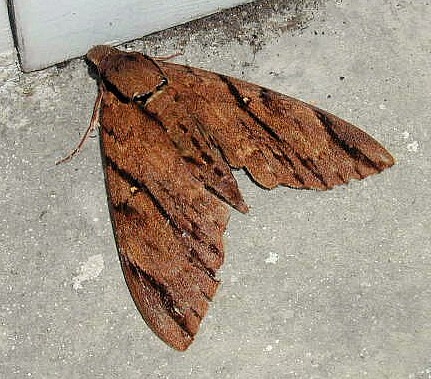
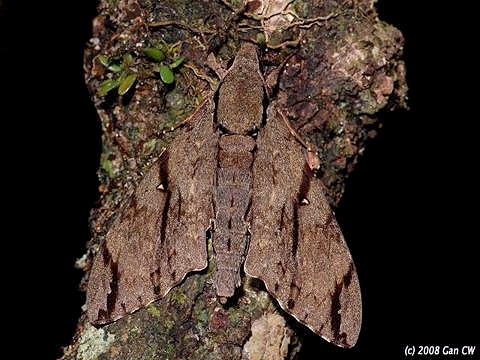
China: 31.v (Guangdong).
OVUM:
LARVA:
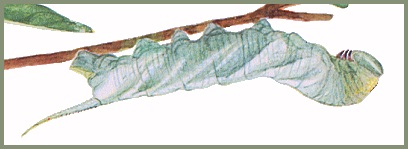
PUPA:
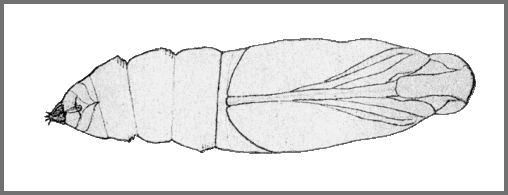
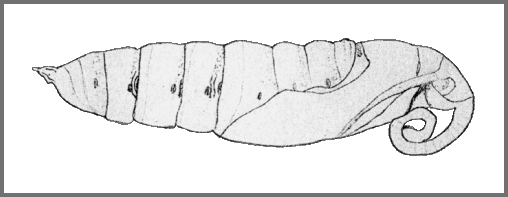
Larval hostplants. So far, mainly from ornamental trees, shrubs and vines, such as Annonaceae: Annona and Uvaria leichhardtii [syn. Melodorum leichhardtii, Fissistigma leichhardtii]; Bignoniaceae: Kigelia africana and Spathodea campanulata (Inoue, Kennett & Kitching, [1996] 1997). Recorded from Fissistigma oldhamii (Hemsl.) Merr. [syn. Melodorum oldhamii Hemsl.] in Yunnan, China.
Ichneumonidae: Quandrus pepsoides (Smith, 1852).
China: Yunnan (Wenshan Zhuang, Malipo County; Dadugangxiang, Xishuangbanna; Menglunzhen; Wang Tian Shu); Guangdong (Shaoguan, 700m; Nanling National Forest Park, 1100m; Madongcun Park; Nankunshan National Forest Park); Hainan (Mingfeng Valley, Jianfengling).
Northeastern India (Arunachal Pradesh), central and northern Thailand, southern China, and southwards to central Vietnam (Le & Vu, 2024).
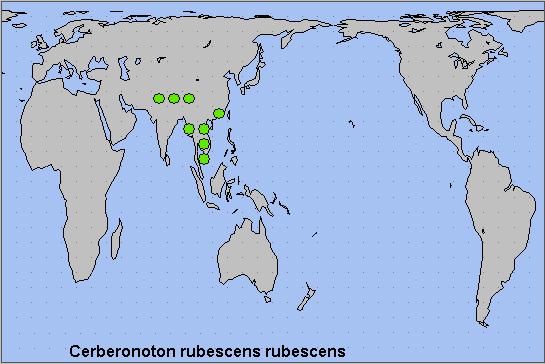
 Return to Sphingidae of the Eastern Palaearctic species list
Return to Sphingidae of the Eastern Palaearctic species list